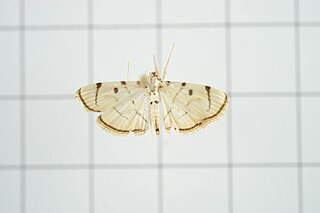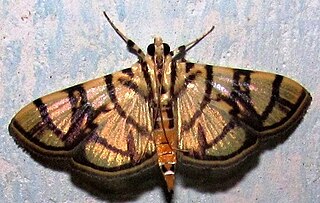
Sikkim is a state in northeastern India. It borders the Tibet Autonomous Region of China in the north and northeast, Bhutan in the east, Nepal in the west, and West Bengal in the south. Sikkim is also close to India's Siliguri Corridor near Bangladesh. Sikkim is the least populous and second smallest among the Indian states. A part of the Eastern Himalaya, Sikkim is notable for its biodiversity, including alpine and subtropical climates, as well as being a host to Kangchenjunga, the highest peak in India and third highest on Earth. Sikkim's capital and largest city is Gangtok. Almost 35% of the state is covered by the Khangchendzonga National Park – a UNESCO World Heritage Site.

Gangtok is a city, municipality, the capital and the largest town of the Indian state of Sikkim. It is also the headquarters of the East Sikkim district. Gangtok is in the eastern Himalayan range, at an elevation of 1,650 m (5,410 ft). The town's population of 100,000 are from different ethnicities such as Bhutia, Lepchas and Indian Gorkhas. Within the higher peaks of the Himalaya and with a year-round mild temperate climate, Gangtok is at the centre of Sikkim's tourism industry.

The history of Sikkim, an area in present-day North-East India, began in 1642 as a kingdom established when India and Nepal were still many princely states with many rulers at that time and had not unified to the present Union of India and present country of Nepal. At that time Sikkim had already solidified into country then with a king known as a Chogyal or dharma king, and till 16 May 1975 was an independent country ruled by the monarchs. Sikkim had twelve kings; Palden Thondup Namgyal was the last king of Independent Sikkim. There was contacts between ancient Hindus and Tibetans, followed by the establishment of a Buddhist kingdom or Chogyal in the 17th century. Sikkim emerged as a polity in its own right against a backdrop of incursions from Tibet and Bhutan, during which the kingdom enjoyed varying degrees of independence. In the early 18th century, the British Empire sought to establish trade routes with Tibet, leading Sikkim to fall under British suzerainty until independence in 1947. Initially, Sikkim remained an independent country, until it merged with India in 1975 after a decisive referendum. Many provisions of the Indian constitution had to be altered to accommodate the international treaties and between Sikkim and India.

The Rangeet or Rangit is a tributary of the Teesta river, which is the largest river in the Indian state of Sikkim. The Rangeet river originates in the Himalayan mountains in West Sikkim district. The river also forms the boundary between Sikkim and Darjeeling district. A perennial river, it is fed by the melting snow of the Himalayas in early summer and the monsoon rains in June–September. It is popular among rafting enthusiasts owing to its turbulent waters. The river flows past the towns of Jorethang, Pelling and Legship. During its final few kilometres, it joins the Teesta River at a confluence known as Tribeni, which is a popular picnic spot. The Rangeet river has an NHPC hydropower plant with a capacity of 60 megawatts (80,000 hp) capacity in Sikkim.

Byasa polyeuctes, the common windmill, is the most common member in India of the windmills genus (Byasa), comprising tailed black swallowtail butterflies with white spots and red submarginal crescents.

Byasa latreillei, the rose windmill, is a butterfly from the windmills genus (Byasa), found in various parts of Asia, comprising tailed black swallowtail butterflies with white spots and red submarginal crescents.

Byasa plutonius, the Chinese windmill, is a butterfly found in Asia that belongs to the windmills genus (Byasa), comprising tailed black swallowtail butterflies with white spots and red submarginal crescents.

Taraka hamada, the forest Pierrot, is a small butterfly found in Asia, that belongs to the lycaenids family.

Sikkimese cuisine is the cuisine of the state of Sikkim, located in northeastern India. Rice is a staple food, and fermented foods traditionally constitute a significant portion of the cuisine. Nepalese cuisine is popular, as Sikkim is the only state of India with an ethnic Nepali majority. Many restaurants in Sikkim serve various types of Nepalese cuisine, such as the Newa and Thakali cuisines. Tibetan cuisine has also influenced Sikkimese cuisine.

United Sikkim Football Club is an Indian professional football club based in Gangtok, Sikkim. Founded in 2011, the club playes in the Sikkim Premier Division League. United Sikkim is the only club from Sikkim to play in the I-League, one of the top flights of Indian football. The club which is owned by former India captain Baichung Bhutia, was founded in order to give the people of the Indian state of Sikkim a team.

Agrotera leucostola is a moth in the family Crambidae. It was described by George Hampson in 1896. It is found in Taiwan and in the Indian states of Sikkim and Assam.

Pycnarmon aeriferalis is a moth in the family Crambidae. It was described by Frederic Moore in 1877. It is found in India and Taiwan.

Pycnarmon alboflavalis is a moth in the family Crambidae. It was described by Frederic Moore in 1888. It is found in India and Bhutan.

Pycnarmon marginalis is a moth in the family Crambidae. It was described by Samuel Constantinus Snellen van Vollenhoven in 1890. It is found in Sikkim, India and Taiwan.
Sameodes enderythralis is a moth in the family Crambidae. It is found in India (Sikkim).
Sufetula sunidesalis is a moth in the family Crambidae. It was described by Francis Walker in 1859. It is found on Borneo and in India, Sri Lanka and Malaysia.
Syllepte pseudovialis is a moth in the family Crambidae. It was described by George Hampson in 1912. It is found in India, Bhutan, Sri Lanka, Borneo and Indonesia.

Syllepte gastralis is a moth in the family Crambidae. It was described by Francis Walker in 1866. It is found in India and Bhutan.
Syllepte nigriflava is a moth in the family Crambidae. It was described by Charles Swinhoe in 1894. It is found in the Indian states of Meghalaya and Sikkim.

Tyspanodes nigrolinealis is a moth in the family Crambidae. It was described by Moore in 1867. It is found in India (Sikkim) and Cambodia.
















